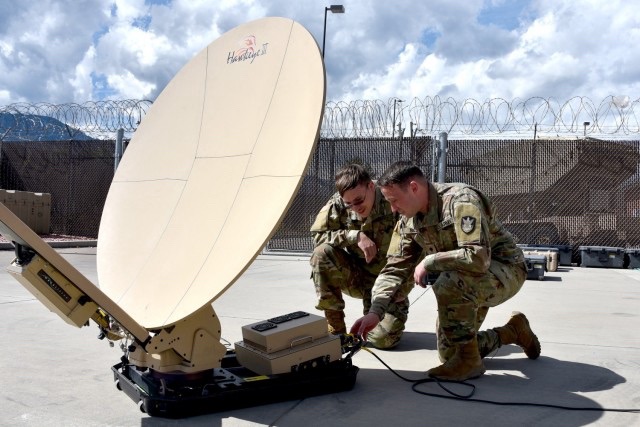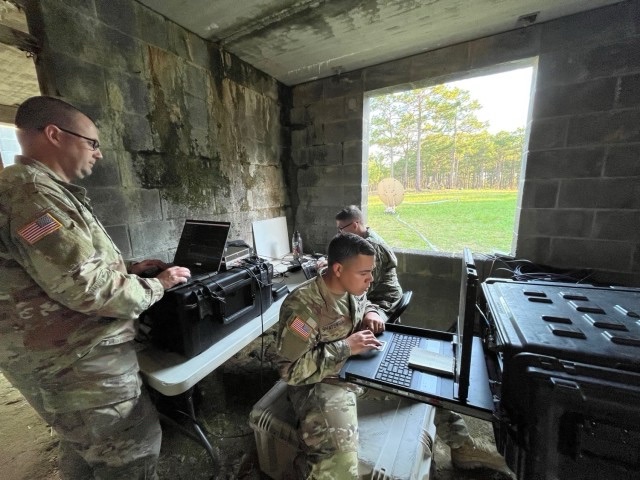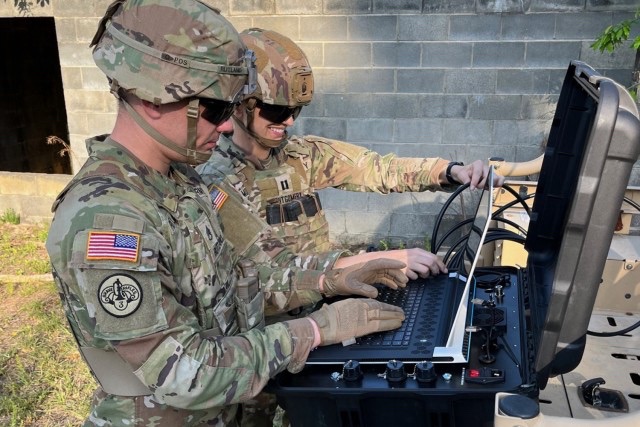
WASHINGTON — “The Army Space Vision will ensure our commanders integrate space-based operations into all aspects of our operational planning and execution to prevail on tomorrow’s contested battlefields.” — The Honorable Christine Wormuth, 25th Secretary of the Army.
Army space will reach new heights in 2024. This month, the Secretary of the Army, Chief of Staff of the Army and Sergeant Major of the Army published the Army Space Vision outlining a renewed focus for Army space activities. The new space vision directs the Army to concentrate on: (1) integrating friendly joint, coalition, and commercial space capabilities and (2) interdicting adversary space capabilities to protect friendly forces. These two roles and responsibilities are critical components to multidomain operations, and they enable the Army to effectively shoot, move, communicate, and survive on a 21st-century battlefield. The Army Space Vision focuses the scope of Army space operations to its core interests while acknowledging the Space Force mission to provide mission-critical space capabilities to the Joint Force.
The Army Space Vision is a call to action for commanders and staffs, at every echelon, to better understand how the space domain impacts land operations and how operations on land can impact the space domain. As the Army prepares for large-scale ground combat operations against peer competitors, the Army cannot take friendly space capabilities for granted or discount adversary space capabilities. This reinforces guidance outlined in Army Field Manual 3-0 emphasizing commanders and their staffs require an increased understanding of the space domain and the Army can no longer assume it can operate unobserved. Additionally, commanders cannot assume they will have unconstrained use of space capabilities.

To increase the Army’s collective understanding of the space domain, commanders should seek out Army space professionals within their organization or their higher headquarters. Army space professionals can help units by increasing their knowledge of friendly and adversary space capabilities and, more importantly, how they affect operations on land. The Army must integrate its space professionals into day-to-day operations and more long-term planning efforts at a minimum. They can also spearhead leader professional development sessions that emphasize the integration of friendly space capabilities to enhance all Army warfighting functions and the interdiction of adversary space capabilities to protect friendly forces.
As the Army seeks to integrate joint, coalition, and commercial space capabilities it must prioritize the following space mission areas (1) Positioning, Navigation, and Timing (PNT) (e.g., Global Positioning System), (2) Satellite Communications (SATCOM); (3) Intelligence, Surveillance, and Reconnaissance (ISR); and (4) Missile Warning. These are not the only space mission areas; however, these four space mission areas are the most consequential for the Army to carry out its mission. Additionally, the Army still develops ground user equipment in concert with its joint, coalition, and commercial space capability providers. As the Army uses friendly space capabilities, commanders and staffs need to know the interdependencies and potential vulnerabilities.
When it comes to interdicting adversary space capabilities, Army commanders and staffs must understand space domain threats and how they impact land operations. Rapid advancements in adversary space capabilities pose a significant risk to the Army and land forces particularly. For instance, adversary PNT systems enable long-range precision-guided munitions, SATCOM provides beyond-line-of-sight encrypted communication for command and control, and ISR allows persistent observation and geolocation. To mitigate the threat, Army space professionals can conduct space operations that deny or degrade adversary use of space for hostile purposes. Interdicting adversary space capabilities protects friendly forces and is an essential element in multidomain operations.

The Army Space Vision also differentiates Army space from the other services. Since the Space Force establishment, each service has retained a cadre of space professionals and service-unique space capabilities. All services integrate joint, coalition, and commercial space capabilities, and most services conduct space operations to interdict adversary space capabilities. The common thread among the services is tailoring space professionals and space capabilities to their domain. For the Army, its space professionals directly support ground maneuver commanders on the land domain. The Army specially designs its space capabilities to co-locate and maneuver with ground forces at the forward edge of battle. These service-unique space capabilities are smaller in size, more mobile, produced at a greater scale, and built for combat.
The Army looks forward to actualizing the new vision over the coming months and years. In addition to the Army Space Vision publication, there are other momentous changes taking place too. First, the Army proponent for space and high altitude, the U.S. Army Space and Missile Defense Command, recently had a change of command ceremony as it said farewell to Lt. Gen. Dan Karbler and welcomed Lt. Gen. Sean Gainey. Second, the Army is developing and fielding new capabilities to interdict adversary use of space for hostile purposes. Third, the Army is also contemplating elevating its space operations career field from a functional area to a branch. Regardless of whether the space operations career field becomes a branch, there is consensus that Army space professionals, capabilities, and formations will continue to grow.
As the new vision surmises, the Army’s next fight will occur across multiple domains, and successful operations in and through the space domain will be critical to our success. In other words, space is important to the Army and will become increasingly more important going forward. Army commanders and staffs must know how the space domain affects land operations, and how they can affect the space domain. The interplay among domains is a principal reason the Army adopted multidomain operations as its operating concept. The Army Space Vision allows the Army to actualize multidomain operations with its renewed focus on Army space operations. Army senior leader endorsement of the new vision concurrently recognizes the importance of the space domain and substantiates increased investments in Army space professionals, capabilities, and formations.
By COL Pete Atkinson, HQDA Space Chief

